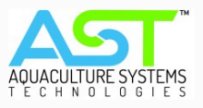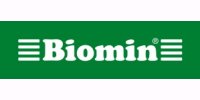JWAS - Editorial Policy
General Information
The Journal of the World Aquaculture Society is an international scientific journal that publishes original, peer-reviewed, English-language papers concerned with the culture of aquatic plants and animals. Subjects appropriate for the Journal would include, but not necessarily be limited to, nutrition, diseases, genetics and breeding, physiology, environmental quality, culture systems engineering, husbandry practices, and economics and marketing. Papers in which relevance to aquaculture is not clearly demonstrated will not be considered for publication. There are no page charges for papers published in the Journal.
Papers are selected for publication based on scientific competence and the significance of the knowledge or ideas presented. Preference is given to manuscripts that are well-prepared, well-organized, and well-written. Fragmentary reports will not be considered for publication; coherent research should be published in a single paper. Preliminary studies, simple case reports, baseline data, parasite host or range extensions, and other such curiosities will not be considered for publication in the Journal.
Four categories of papers are published in the Journal. Review Articles provide objective synthesis of a subject of importance in aquaculture. Reviews should not simply summarize knowledge but should strive to interpret that knowledge and provide sound conclusions based on the available literature. Authors wishing to prepare a review article should contact the Managing Editor to discuss the suitability of the subject for the Journal. Research Articles are full scientific reports of original research. Research articles are typically of broad scope and interest to other workers in the relevant discipline. Research Notes differ from research articles on the basis of scope, not quality. Notes are printed in essentially the same format as full articles but are shorter and of narrower scientific focus. Notes should have no more than four tables or figures. Communications are brief reports of new observations, concepts, or methodologies. Communications should contain no more than two tables or figures.
Preparation of Manuscript
Specific directions for preparation of manuscripts are provided in the Manuscript Preparation Checklist found here and printed in the March issue of each Journal volume. The Checklist may also be printed in other issues during the year as space permits. The Checklist is designed to help authors prepare manuscripts in the proper format for the Journal.
Submission of Manuscript
Completed manuscripts should be submitted via the website (http://mc.manuscriptcentral.com/jwas). New users should go to the tab in the upper right hand corner to “Create an Account”. A User ID and password will be sent via email within a few minutes. Follow the directions for submission of your manuscript. Send any questions concerning manuscript submission to:
Dr. Carl Webster, Editor-in-Chief (cwebster@dcr.net)
Prior Publication
Papers that have been published or are under consideration for publication elsewhere in an accessible, retrievable form are not acceptable for submission to the Journal of the World Aquaculture Society on grounds of prior publication. This includes papers whose substance has been published previously in conference or symposium proceedings, technical bulletins or reports, magazines, as well as those published in other peer-reviewed scientific journals. Prior publication also extends to papers posted on the Internet or available to the scientific community on CD-ROM or other electronic formats. Abstracts or brief summaries published in conference reports or symposium proceedings do not constitute prior publication, and the full paper on which the abstract or summary is based may be submitted to the Journal.
Review
Manuscripts submitted to the Journal will be initially assessed for suitability of subject matter and overall technical quality by the Editor-in-Chief. Manuscripts inappropriate for the Journal or in obvious noncompliance with guidelines for manuscript preparation may be returned to the author without further review. If the paper appears appropriate for the Journal, the manuscript will then be sent to an Associate Editor who will oversee technical review by two or three experts. Reviewers are selected for their objectivity and competence in the subject area of the paper. Reviewers may remain anonymous or not, at their discretion.
Authors can influence the reviewers' judgments by submitting concise, clearly written, and well-organized papers that follow the Journal's style and format. To that end, we strongly encourage authors to have their papers thoroughly reviewed by colleagues before submitting to the Journal. Authors whose native language is not English should seek assistance with syntax, grammar, and style from someone proficient in written English. This will help ensure that the merit of the paper is judged on scientific and technical grounds rather than clarity of writing. Be aware that poorly written manuscripts may be rejected on that basis alone.
Editorial decisions are usually one of three types: accept, reject, or revise. A small number of papers are accepted for publication pending minor revision to correct problems with grammar or presentation. On the other hand, papers that do not meet the scientific or editorial standards of the Journal will be returned to the author without the opportunity for resubmission. Most papers submitted to the Journal are returned to the author for substantial modification. The author will be asked to address the comments and suggestions of the reviewers by revising the paper or by offering a rebuttal to the reviewers' comments. Depending on the extent of the required modification, the revised paper may be subject to additional review by the Associate Editor and the reviewers of the original paper.
Submission of Revised Manuscripts
The Editor-in-Chief will provide specific instructions for resubmission of revised manuscripts when the initial reviews are returned to the author. In general, authors are asked to submit a revised manuscript and a cover letter that describes how the reviewers' comments were addressed. The letter should contain a point-by-point description of all changes made to the manuscript, as well as a justification for all instances where the reviewers' suggestions were disregarded.
Revision of manuscripts and responses to reviewers' comments must be completed within 3 months after authors receive the results of the initial review. Revised manuscripts not returned within 3 months of receipt will be treated as new submissions unless the author has contacted the Editor to explain the delay.
Proofs
Shortly before the expected publication date, our printer, Blackwell Publishing, will send the corresponding author an email that contains a pdf file with the copyedited galley proof. Read the copyedited proof carefully. Make sure that the corrections are unambiguous and obvious. At this point in the publication process, changes should be made to correct typesetting or copyediting errors only; alterations to the text are not allowed. Note that the figures on the pdf proofs are low-resolution scans and are intended to show position only. Return the corrected pdf proofs to Blackwell Publishing within 3 days of receipt. Failure to promptly return corrected proofs will delay publication of your paper by at least 4 months.
Questions? Need More Information?
Send your questions to Dr. Carl Webster, JWAS Editor-in-Chief, at cwebster@dcr.net, or call +1-502-597-8109, (FAX) +1-502-564-9118.
Abbreviations
The following abbreviations are used in the Journal of the World Aquaculture Society without definition.
|
g acceleration of gravity |
mg milligram |
















